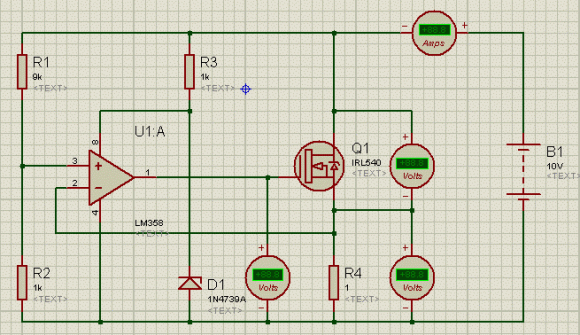
This constant resistance dummy load has not yet been tested in the real world. [YS] was inspired to come up with the circuit after reading Wednesday’s Re:load dummy load post. That was a constant current load, not a constant resistance load. [YS] started with the schematic for the Re:load and made his changes to arrive at this.
For him the exercise was just to alter the design to achieve constant resistance. He didn’t actually build and test the hardware because he doesn’t really have a need for it. This image was exported from Proteus, which includes a ProSPICE circuit emulator. His slides run through test voltages from 5V to 50V, maintaining a constant 10 Ohm resistance.
When studying this project we needed a little refresher on the different varieties of dummy loads. We found this post very informative about the differences and uses of Constant Current, Constant Power, and Constant Resistance (Impedance) loads.


 We’re not really interested in building a dummy load like this one for ourselves. But the concepts behind its design make for a nice little mental exercise as you read your way through the build description. [Pabr] wanted to build a dummy load which could be used to test a cheaply made gas generator. He wanted it to be as simple as possible, while providing a range of different loads. What he came up with is
We’re not really interested in building a dummy load like this one for ourselves. But the concepts behind its design make for a nice little mental exercise as you read your way through the build description. [Pabr] wanted to build a dummy load which could be used to test a cheaply made gas generator. He wanted it to be as simple as possible, while providing a range of different loads. What he came up with is 










